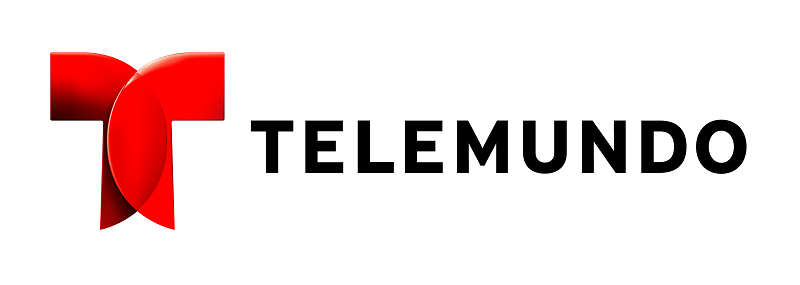With the U.S. Men’s National Team absent from last summer’s World Cup, Telemundo had tremendous success over the course of the tournament. According to the network’s metrics, they drew 20 percent of the U.S.’ English language dominant speakers who tuned in and 80 percent of the English-Spanish bilingual audience.
How will Telemundo top those numbers a month from now, when the network has the U.S. Spanish language rights to the women’s World Cup and Copa America?
“I think you try to improve on it because you always want to do better,” Eli Velazquez, Telemundo’s executive vice president of sports content said at a presentation in late March, “but those numbers are pretty significant.”
Telemundo is trying to market itself as a never-ending party this summer. Beginning June 7, the network will provide 750 hours of live coverage, with World Cup broadcasts in the mornings and afternoons and Copa America programming during the afternoon and evening. Asked if the USMNT missing the World Cup in 2018 provided an advantage for Telemundo, Velazquez said that the network’s approach was and is dedicated to the sport and the matches regardless of who qualifies.
“The amount of care and passion we’re giving to these events in this sport to a Spanish language audience and an emerging Hispanic audience that really wants content presented at a high level,” Velazquez said, is what makes Telemundo stand apart.
And even with the U.S. participating this year, Velazquez said there’s something about broadcasters like Andres Cantor and their other stars putting their unique spin on the matches that you won’t find anywhere else.
“To me, futbol en Espanol is just a more fun, exciting experience,” Velazquez said.
One major way Telemundo will attempt to improve on last year’s strong numbers is rolling out more bilingual content to that growing segment of American viewers.
The Women’s World Cup will be broadcast only in Spanish, but there are shows where Telemundo Deportes will be what Velazquez termed as “toeing the line” on bilingual content. NBC Sports, which will help out and benefit from Telemundo’s coverage, has been broadcasting Sky Sports’ daily news coverage every morning on NBCSN, and Telemundo will extend that partnership by using Sky’s resources during the World Cup to follow the English team and amplify other parts of their coverage and storytelling on the ground from France. Telemundo, Velazquez said, isn’t concerned that Sky’s coverage will be in English, and that they’ll pop some subtitles on the screen and move forward.
Covering tournaments at the same time across two continents and 14 different cities will certainly be challenging, which makes Telemundo’s NBC and Sky partnerships both shrewd and necessary.
“It keeps us from doing certain things because we can’t,” Velazquez said. “Technically I can’t have every match called from every single venue because I don’t have 20 teams of announcers.”
The most important matches will be called on site, but the bulk of them will be broadcast from Telemundo’s Miami studios. But Velazquez is embracing the opportunity to have wall-to-wall coverage of simultaneous tournaments that will be the linchpin of the network’s summer programming.
Telemundo’s morning show Un Nuevo Dia will help set up each day of coverage, and the network’s late night variety show Titulares y Mas will expand from a half hour to an hour during the summer to recap the day’s events and preview what will happen the following day.
“We’re actually going to navigate between both tournaments even in prime time,” Velazquez said. “The blessing of having it in two countries at once is being able to take all that talent that we brought to bare and continue the dialogue throughout the entire day. And we’ll have talent crisscrossing on both parts of our coverage to create a real connective tissue amongst both.”
Velazquez said there was amazing growth in the network’s social content during last year’s men’s World Cup. He said Telemundo expected to reach 3.5 million people on social media, but shattered those expectations with an estimated eight million.
“Clearly there’s a lot of social activity around these events,” he said. “And I think there we have a major opportunity to leverage these initiatives.”
Telemundo plans on using its talent not calling live matches to contribute to second screen experiences on social during the summer’s biggest games. There will also be plenty of shoulder content, including an extension of the NBC Sports and Refinery 29 collaboration On Her Turf, short-form content on YouTube, partnerships with bilingual social media influencers, and other initiatives “to create more buzz and excitement around the event.”
And even though there are no Central American teams in the women’s World Cup next month, Velazquez said Telemundo will try to put care into every country in the tournament while emphasizing and mainly focusing on the USWNT.
“Our approach is that this is a huge event, and every team that’s in it is so thrilled to be there,” Velazquez said. “And there are so many individual stories that took those squads to that moment in time that we should be tapping into that. Because the story will be relateable to anyone if they understand that narrative.”
In addition to having secured interviews with dozens of key players already, Telemundo will also look for potential Cinderella stories like Chile, which will attempt to advance in a group with the U.S., Sweden, and Thailand. That will also be the network’s focus for Copa America. For both tournaments, there will be the diehard, dedicated fans and the casual fans that just want to see the competition, drama and emotion.
The challenge for Velazquez and Telemundo will be in trying to put on two top quality productions for two tournaments in two continents at once while trying to improve on its stellar summer from a year ago.
“I think it’s gonna be great,” Velazquez said. “I don’t feel like we’ve left anything on the table, quite frankly.”






